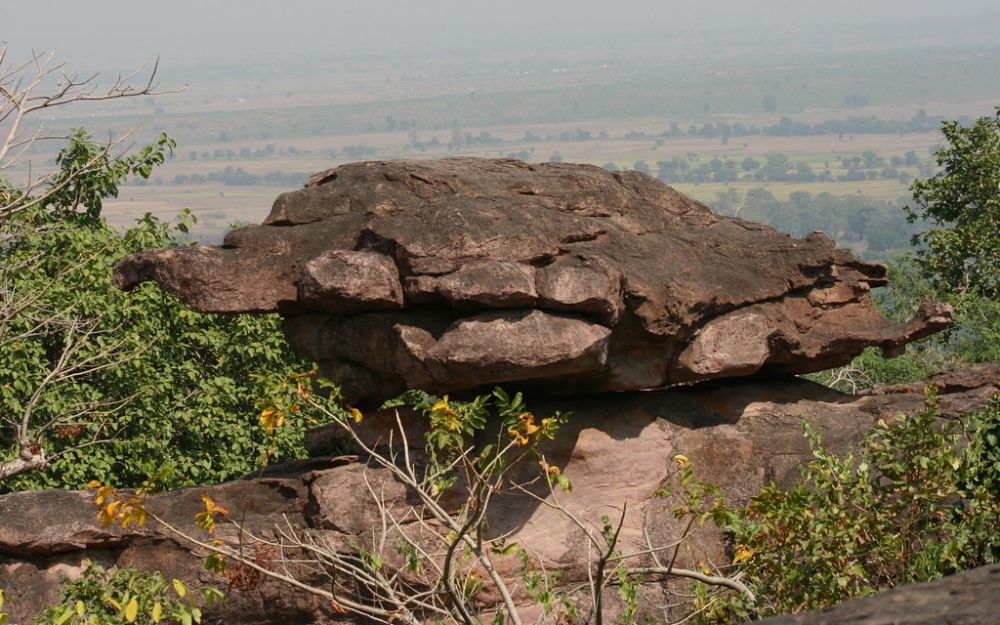

Turtle Rock is one of the fascinating formations located within the Bhimbetka Rock Shelters, a UNESCO World Heritage Site in the Raisen District of Madhya Pradesh, India. Bhimbetka's history stretches back to prehistoric times, with its rock shelters being natural caves that were inhabited by humans as early as 100,000 years ago.
Archaeological studies have discovered that these shelters have evidence of continuous settlement through the Stone Age, and contain a series of rock paintings that are among the oldest known in human history, dating back to approximately 30,000 years. The shelters were discovered in 1957 by Dr. Vishnu Shridhar Wakankar, and since then, have been a focal point for archaeologists and historians alike.
The name 'Bhimbetka' itself is associated with the mythological Mahabharata, as it is believed to have been derived from 'Bhimbaithka', meaning the sitting place of Bhima, one of the Pandava brothers. The natural red and white sandstone formations, like Turtle Rock, have been sculpted over millions of years and resemble various figures, with Turtle Rock bearing a striking resemblance to a turtle. This unique natural attraction is not only a testament to geological history but also carries considerable mythological and spiritual significance.
The tourism history of the Bhimbetka rock shelters and Turtle Rock started gaining traction after the site's recognition by UNESCO in 2003. Visitors from across the world come to marvel at this historical treasure. Turtle Rock, along with other formations, offers a unique perspective on natural art and ancient human life.
Tours are conducted regularly, allowing tourists to immerse themselves in the rich ambiance of early human creativity and spirituality. The rock shelters offer numerous panoramic vistas of the surroundings and give visitors the opportunity to witness the picturesque natural beauty and historic cave paintings that illustrate scenes from the everyday lives of prehistoric humans.
Eco-Tourism: The latest trend in tourism for Bhimbetka and the surrounding area is eco-tourism. There is a growing emphasis on preserving the natural habitat and cultural history of the site, with guided tours that educate visitors on the importance of conservation.
Digital Engagement: Another trend is the use of digital technologies to enhance the visitor experience. The Archaeological Survey of India has been working on developing digital interpretive resources and virtual tours that enable people to explore the rock shelters and formations like Turtle Rock from anywhere in the world.
Adventure Activities: Besides historical tours, the region around Bhimbetka is also being developed for adventure tourism, including trekking, hiking, and possibly rock climbing, attracting a diverse group of tourists seeking both cultural enrichment and outdoor activities.
Local Culture and Handicrafts: Tourism initiatives are increasingly incorporating local culture and handicrafts, providing visitors with an authentic experience of the traditions of the indigenous people of Madhya Pradesh, while also supporting local economies.
In conclusion, Turtle Rock and the Bhimbetka rock shelters offer an extraordinary glimpse into prehistoric life and natural history, with their tourism potential being carefully developed to ensure both the preservation of this invaluable heritage and the enrichment of visitor experiences.